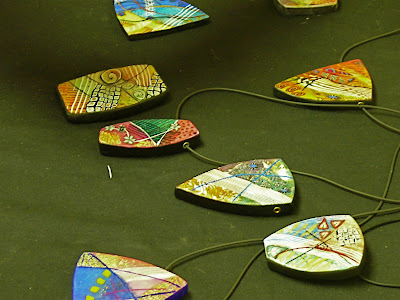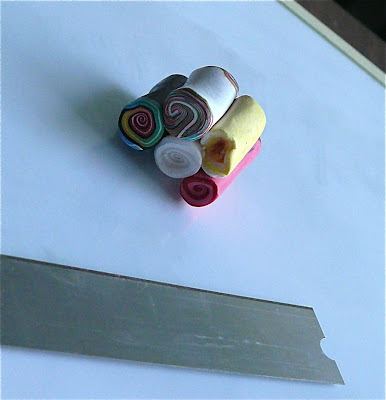I just did a two day Kathleen Dustin workshop in Albuquerque, New Mexico, where we learned her translucent layering techniques. It was great! Kathleen has an art background, which gives her instruction more depth beyond polymer, she talks about design and bringing your pieces to the next level beyond the ordinary.
We learned about the elements of composition within an abstract piece, translucent layering, polishing, drilling, and finishing.
We learned about the elements of composition within an abstract piece, translucent layering, polishing, drilling, and finishing.
 One of Kathleen Dustin's pieces.
One of Kathleen Dustin's pieces.I have taken several polymer workshops and enjoyed them all, but Kathleen's techniques really helped shape a vision I have of getting my own personal imagery onto polymer. I know exactly what I want to do now as soon as I get home!
 Student's finished pendants
Student's finished pendantsAnnie Hooten organized and made this workshop happen, which was a year in the making. Annie does a great job of keeping students updated prior to the workshop, and everything went smoothly. She organizes workshops on a regular basis, I highly recommend you attend one Annie is putting together.
I am attending the second Kathleen Dustin workshop this weekend, and will report my experience next week!
I am attending the second Kathleen Dustin workshop this weekend, and will report my experience next week!
























